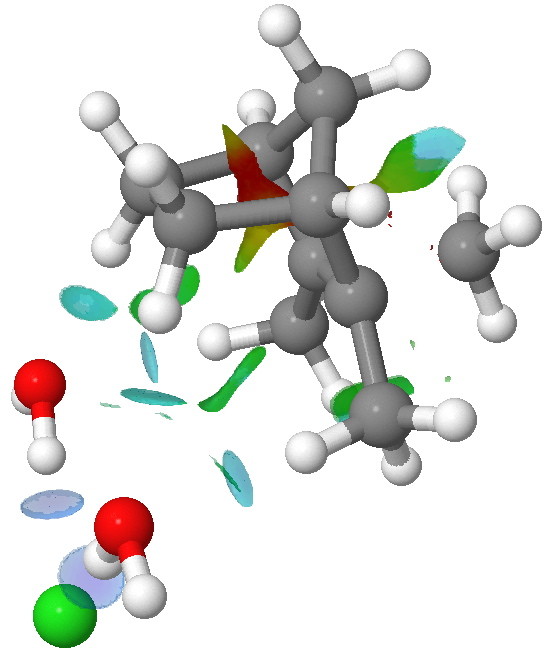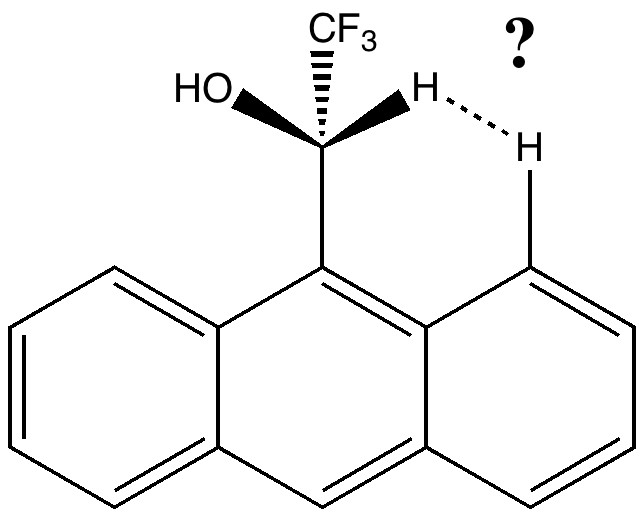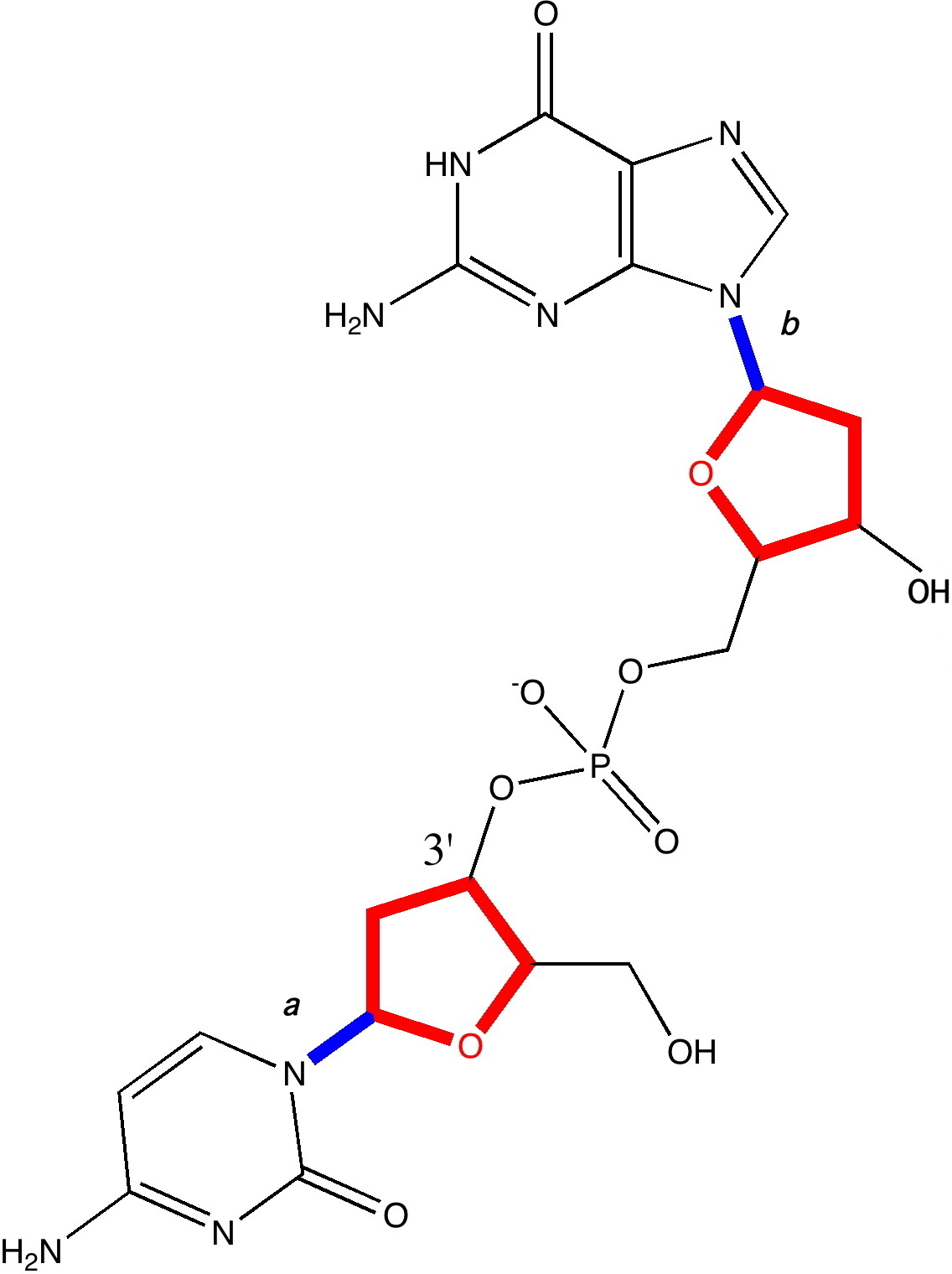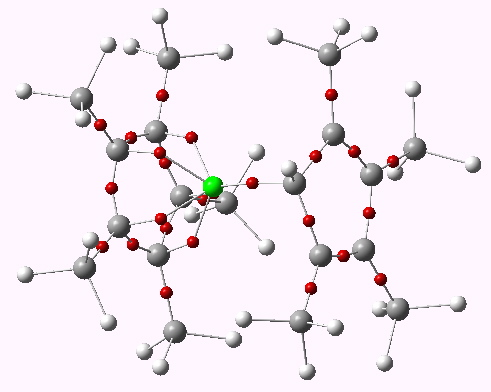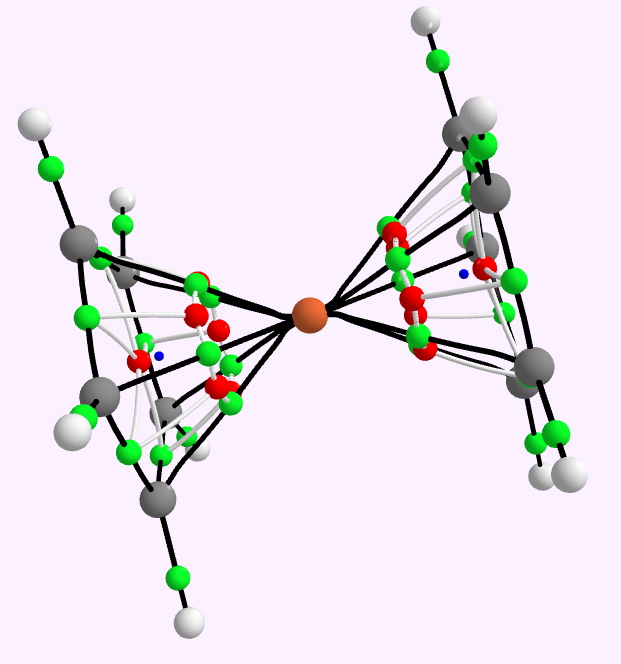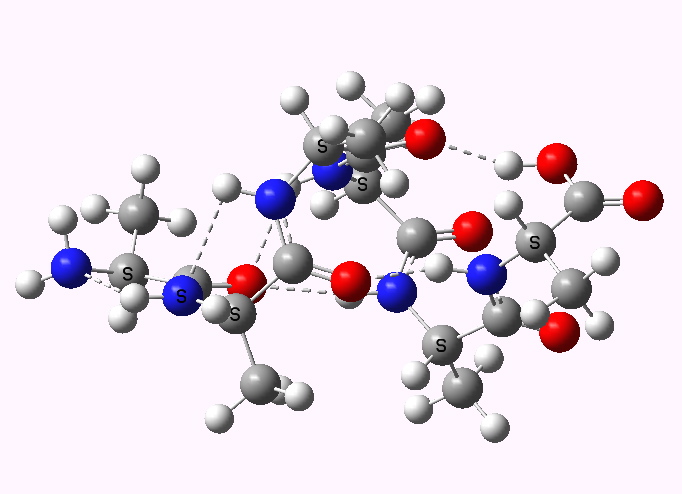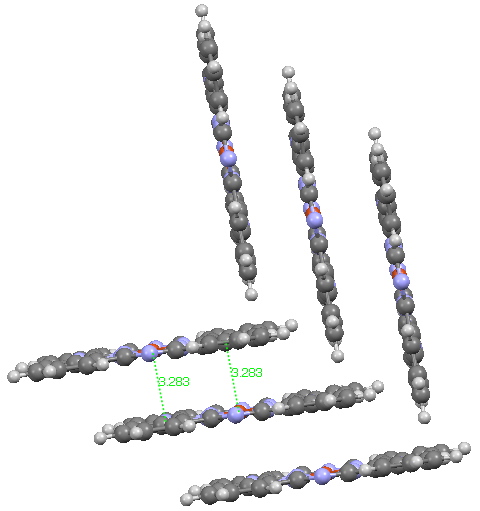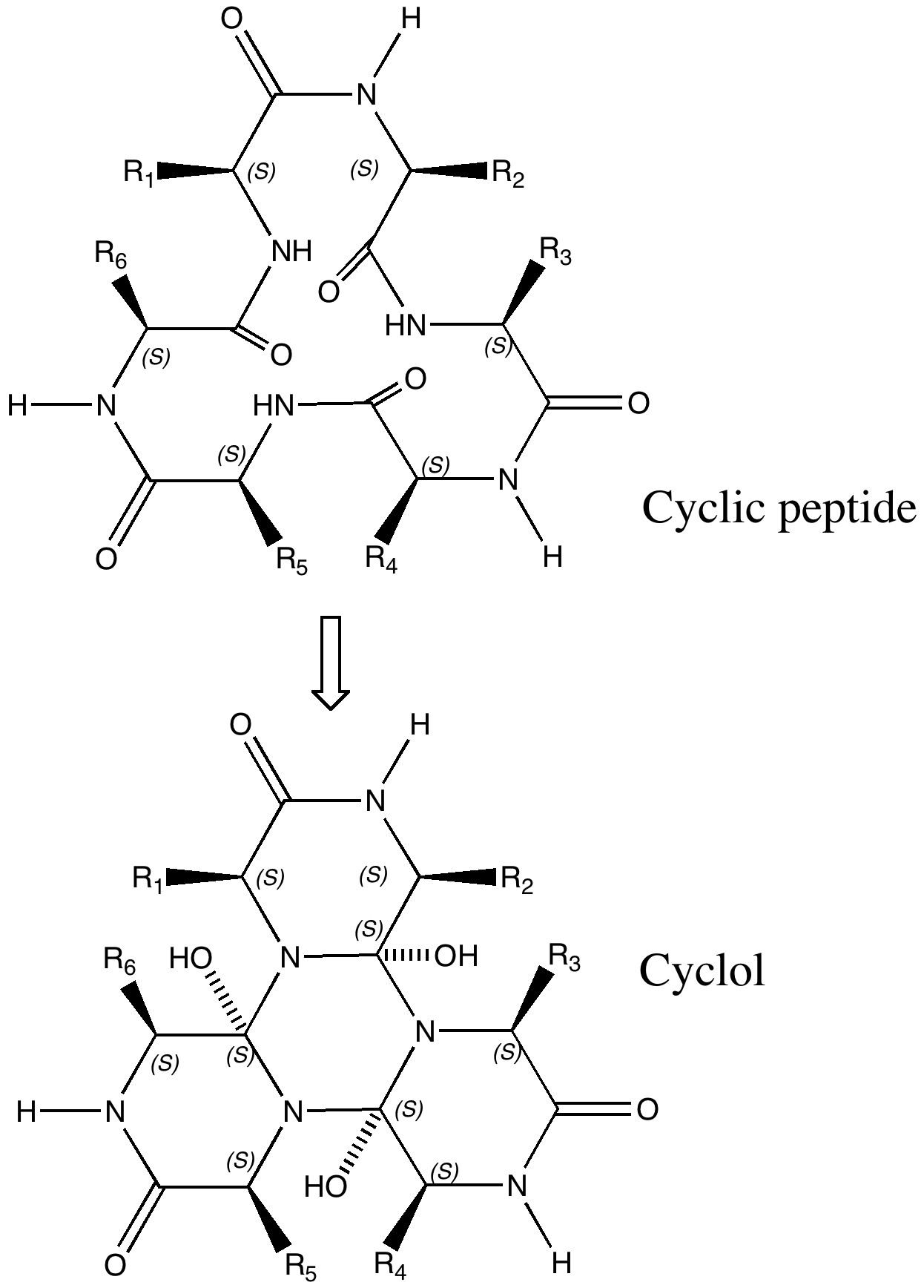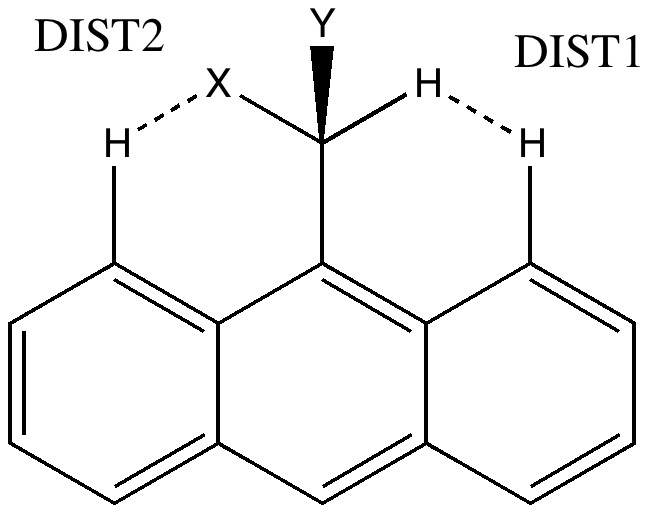
The Pirkle reagent is a 9-anthranyl derivative (X=OH, Y=CF 3 ). The previous post on the topic had highlighted DIST1, the separation of the two hydrogen atoms shown below. The next question to ask is how general this feature is. Here we take a look at the distribution of lengths found in the Cambridge data base, and focus on another interesting example. 9-anthranyl derivatives. Click for Pirkle with normalised C-H lengths.
